Remember when “NEXTEL (b-b-b-beep), how business gets done…” Well, not anymore. NEXTEL was purchased by Sprint in 2005 and their product lines were combined. Thus, all of these old NEXTEL sites have become redundant and switched off. This particular site was co-located with one of our FM radio clients, which required a power reduction while the old equipment was removed from the tower. I took the time to grab a few pictures of the process:
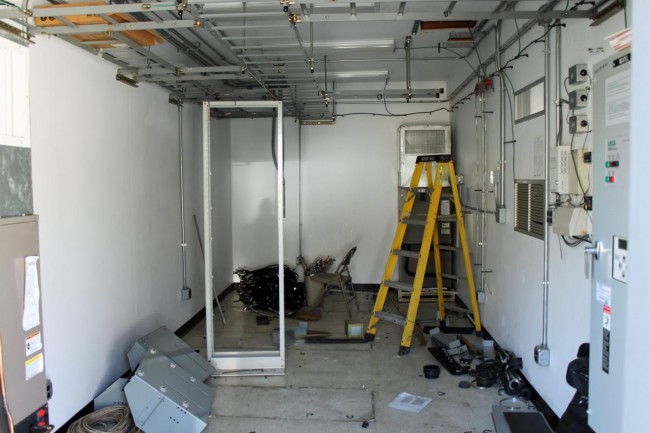
All of the equipment was removed from the equipment shelter. This site has been switched off since June 2013 and everything in it is destined for the scrap yard. This equipment worked on the 800 MHz bands, which have been re-purposed for Public Safety and Critical Infrastructure, e.g. government users. These racks and radios look like they were expensive:
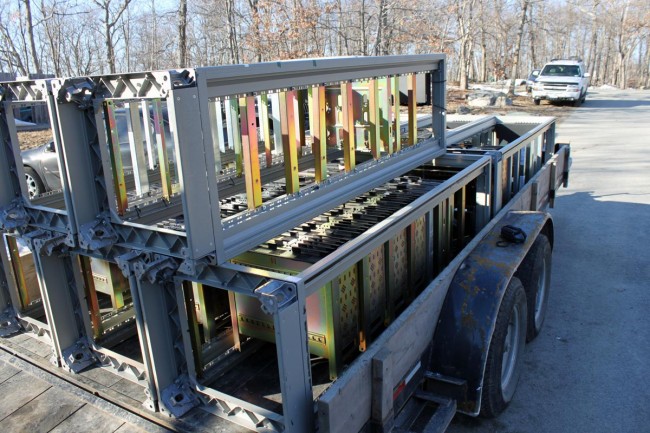
Speaking of expensive, this site had over 4,500 feet (1,370 meters) of 1 5/8 inch foam coax, which was cut up and scrapped. At today’s prices, that cost $13.25 per foot.
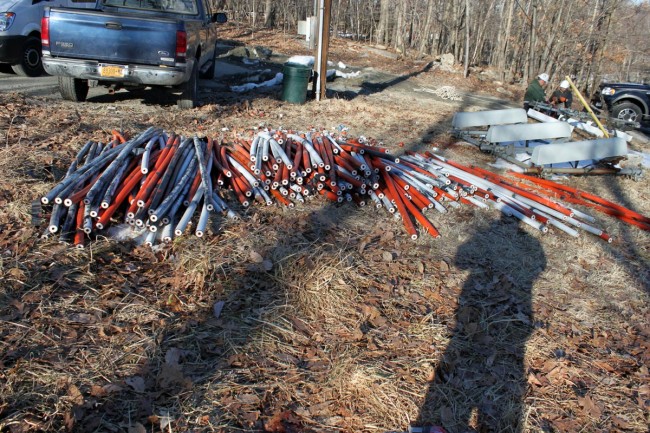
The tower was rigged:
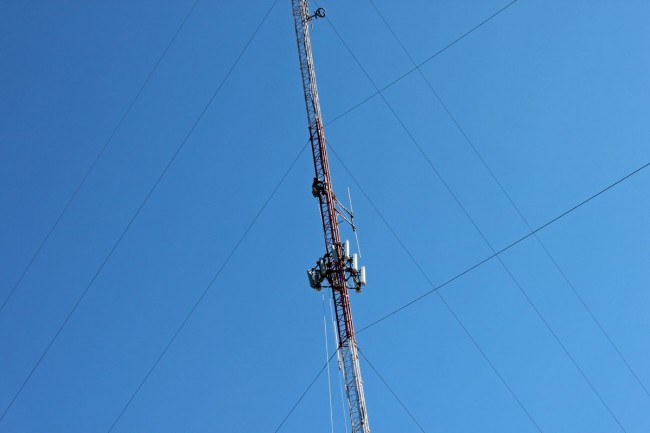
Each of the three panel sector mounts were removed and lowered to the ground.
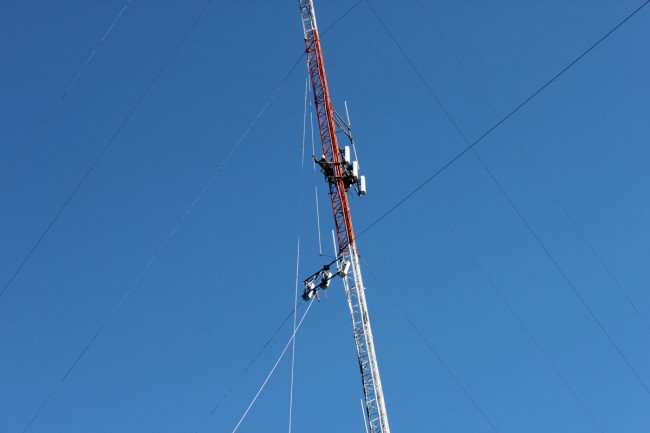
The NEXTEL antennas were mounted at the 260-foot (80 meter) level of a 395-foot (120 meter) tower. It took some time to remove all of the antennas and equipment from the tower.
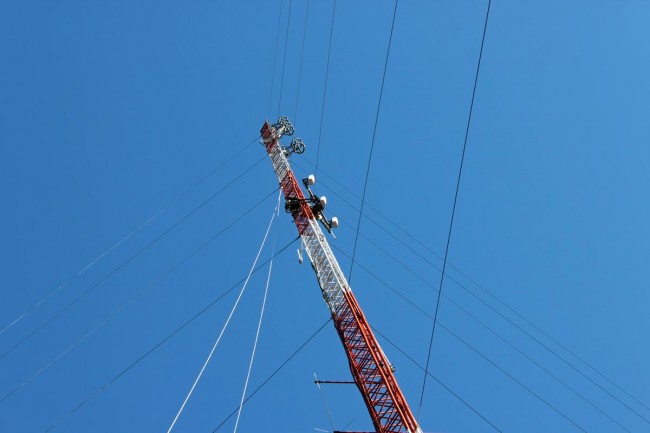
I looked on the Sprint website and could not determine if they still offer a push to talk service option (direct talk). With all of the communications options available today, I do not expect there would be much call for it.
For old times sake, here is an old NEXTEL commercial from many years ago:
They did have a good marketing department…




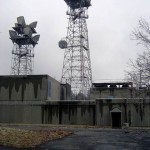
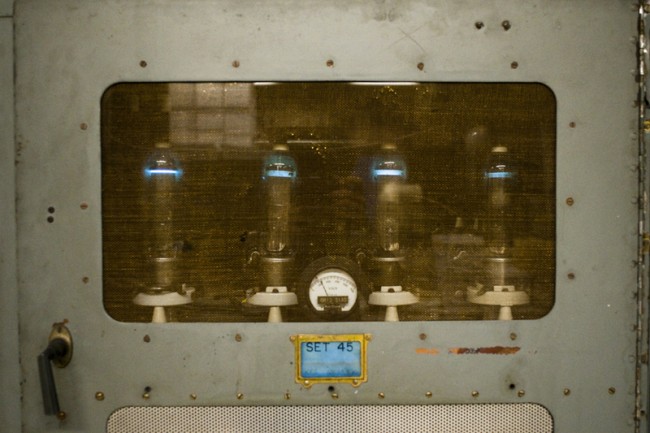
If possible you should grab a few of the cleaner chunks of coax. They can be used to make nice filters for 6 meters and higher.
Unfortunately, no salvage was allowed. According to the contractor, all material, including racks, antennas, mounts, transmission line, etc had to go directly to a recyling facility.
Sprint still does offer a push to talk service. When our station was at Met Life Stadium for the latest Super Bowl, our “Field Producer” rented several of these Sprint PTT phones so we could still communicate between the stadium, the parking lot podium, the satellite truck and the production trailer while the game was under way. He thought it would be a good idea to have a backup to our iPhones because the cell towers would probably be overwhelmed with everybody texting, tweeting, streaming and calling. He was not amused nor did he believe me when I pointed out that this service also uses those same cell sites. As the morning satellite truck operator, I spent the Super Bowl enjoying a beer and watching the game on a giant TV back at the team hotel in New Jersey. As I expected, everybody reported that the rented push-to-talk units were “useless” once the crowd arrived and the game was underway.
A quick check of both eBay and craigslist reveals that you can still buy many Nextel branded phones. They won’t work for the PTT function, of course, but I don’t know if they could get service from another type of cell site. My guess is not, and that anything branded with the “IDEN” logo is a useless brick at this point. I’d love to know who is bidding $24 for a lot of 8 i560 Nextel IDEN phones, and what they think they could do with them.
Val
We had Nextel on one tower of one of our directional AM’s. To avoid having to do a proof when the antennas come down, we allowed them to abandon in place. They emptied out their enclosure, but left the antennas and lines on the tower, and the isocouplers across the base (all 12 of them!). We also took ownership of the enclosure. Eventually, we’ll get our crew to remove the antennas and line and we’ll do the proof.
Glad to see iDEN go. Nextel’s implementation caused incumbent public safety radio systems more headache than you can imagine. I remember driving around with a county issued MTS2000 when we were on Smartnet II and you got within a few hundred yards of an iDEN BTS and instant desense to the point your radio loses the control channel and bonked “OUT OF RANGE”. You can imagine how this is a problem when you’re fighting a fire, or getting shot at, all because some half-ass SMR was built out with pico cells with low beam tilt on radio spectrum that they never should have been allowed to deploy such a buildout on anyway. Regardless, it’s over now and the big gorilla got shot in the butt. But not like they didn’t gain a windfall of spectrum in the process, so they had to spend a couple of billion buying us some new radios, that’s pocket change compared to what Sprint got out of the deal.
Radio spectrum is the new real estate. And all of us who aren’t telecom cartels are fair game for reassignment, that includes broadcast and public safety radio. Say it isn’t so.
Yeah, there were problems with interference from using the 800 MHz SMR frequencies. Still, as NEXTEL pointed out, they were not doing anything that was not allowed under the FCC regulations of the day. I think they moved up and away from the SMR frequencies later on.
That was always there answer to our APCO complaints, “we are operating within our emission mask”. Problem is 6 slot TDMA on C-QUAM makes a heck of a lot of noise when you are slap up against an FM analog or C4FM/CQPSK co-channel user. Most public safety systems are designed to operate with few high powered sits and very sensitive subscriber radios. Put a “border blaster” with crappy modulation on every street corner, well, you get the idea.
FYI, Mr. Nextel himself, Morgan O’Brien,is now wanting to FCC to re-purpose the 900MHz SMR band for “business LTE”. And so the deconstruction of SMR as we now it begins. I don’t think many who don’t rely on LMR understand that LTE is NOT the answer to everyone’s communications needs. Something that is heavy on infrastructure and bandwidth makes to dispatch voice calls reliably for public safety and business users makes about as much sense as boobs on a bull.
http://urgentcomm.com/spectrumfrequency-coordination/initial-meeting-fcc-officials-encouraging-transforming-900-lmr-channe
But we all know how this will play out. The telecom cartels are going to suck up every bit of radio spectrum they can, no matter how it does or does not serve the public interest. Considering there are huge swaths of this country which don’t even have basic 2G cellular data and voice service, the notion that LTE is for everyone is just not reality.
Broadcasters: watch out, your spectrum is next on the auction block. Don’t say I didn’t warn you.